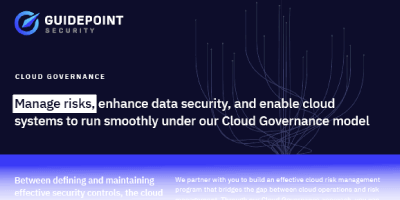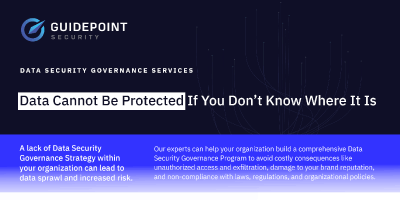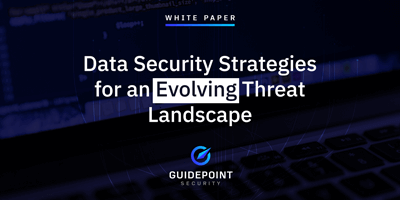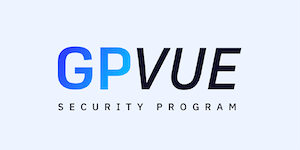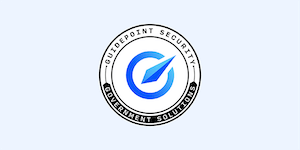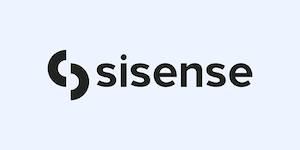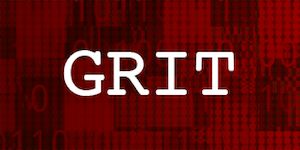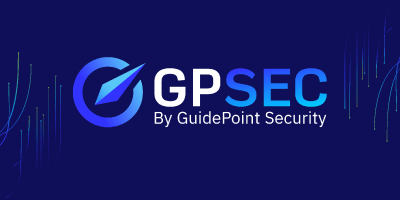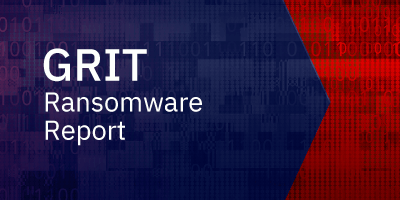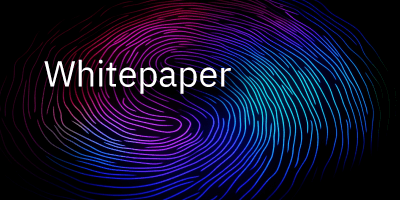What is Threat Modeling
Threat modeling often involves taking a hypothetical threat scenario and applying that scenario to systems and networks to locate common vulnerabilities, clarify objectives, and develop mitigations. Threat modeling focuses on utilizing knowledge of adversaries, vulnerabilities, and the organization to predict how potential threats might affect the organization before they happen. At the core of threat modeling is the tenet that a system, individual, or the organization itself will always have some cybersecurity vulnerability that could be exploited. With this in mind, threat modeling aims to provide insight into how strategic, operational, and tactical security goals do or do not mitigate identified threats facing the organization.
The threat modeling process in cybersecurity is a way to visualize threat sources, events, and potential outcomes in order to realize and mitigate these threats before they become a reality. By breaking down key components within the threat hunting process, businesses can construct an accurate and effective threat hunting model for their organization and improve business operations.
What is Application Threat Modeling?
Application threat modeling is a process that helps to ensure the security of an application by:
- Identifying issues earlier in the SDLC before code has been developed
- Evaluating emerging threats
- Augmenting current testing efforts and targeting assets or features identified as high-risk with a high likelihood of an attack
- Identifying gaps in your current requirements-gathering process
Identifying issues earlier in the SDLC before code has been developed
It's crucial that organizations possess proactive identification of potential security vulnerabilities throughout their software development lifecycle. With robust threat modeling in cybersecurity, organizations can detect and address issues early on, thereby avoiding costly post-deployment fixes and saving time and more. More importantly, though, early detection makes it easier to prevent breaches and help organizations protect themselves from reputational damage. This proactive approach is essential in maintaining trust and ensuring long-term business sustainability.
Evaluating emerging threats
The digital threat landscape is an ever-evolving one rife with security vulnerabilities and sophisticated tactics that pose multiple challenges. This dynamic environment underscores just how important it is for organizations to adopt threat modeling solutions such as those we offer at GuidePoint Security to stay one step ahead of emerging threats. With threat modeling, organizations can prepare for potential security issues and adapt their defenses to tactics used by cyber attackers across different threat categories.
Augmenting current testing efforts and targeting assets or features identified as high-risk
Threat modeling supplements standard testing protocols by allowing organizations to target higher-risk areas. Threat modeling, unlike many conventional testing methods, involves identifying and evaluating potential security threats for a focused approach to cybersecurity. This strategic analysis allows organizations to prioritize and address vulnerabilities that standard tests might overlook, enhancing overall security and ensuring a more robust defense against sophisticated cyber threats.
Identifying gaps in your current requirements-gathering process
Threat modeling goes beyond just addressing current threats; it plays a key role in refining operational processes. This proactive approach not only counters existing threats but also aids in continuously improving security strategies. It ensures that protective measures evolve in tandem with emerging risks, thereby enhancing the organization's overall resilience. Integrating these models into regular operations leads to more robust and adaptive security protocols, vital for maintaining a strong defense in the rapidly changing digital landscape.
Why is the threat modeling process important in cybersecurity?
In today’s cyber-based world, businesses are constantly being introduced to new and emerging threats that are attempting to infiltrate networks, disrupt operations, or extort money. A cybersecurity professional’s job is to research these threats by implementing and mitigating them in a structured and safe environment to ensure businesses can safeguard assets, data, and infrastructure. Threat modeling helps to facilitate an understanding of threats most likely to impact an organization and enables security professionals to implement mitigation strategies that lower an organization’s cybersecurity risk.
Threats, including their structure, environment, sources, and impact, are complex and change often. A threat model creates a visual representation of a threat to make it easier to consume complex information. In addition, the relationships between threats, their sources, and their impact are often intricate and non-linear. Threat models enable multiple teams to track information simultaneously and allow for easy, straightforward consolidation (and deduplication) of threat data. Cybersecurity professionals use a threat model because it is malleable, efficient, and can scale between multiple teams.
How does the threat modeling process fit inside the threat intelligence lifecycle?
The broader threat intelligence lifecycle includes threat modeling as well as threat hunting and threat intelligence. The threat modeling team interacts directly with both the threat intelligence and threat hunting teams.
Most commonly, the threat intelligence team creates products that need to be evaluated for inclusion into the threat model. The products coming from the threat intelligence team are focused on emerging threats, changing tactics, and campaigns from known threat actors. The threat modeling team consumes the intelligence products and determines how the intelligence updates or alters the threat model.
The threat hunting team consumes the contents of the threat model to develop relevant and testable hypotheses. These hypotheses describe a threat and a specific methodology, and are used to create threat hunts in the environment designed around the types of threats most likely to target the organization.
Who does threat modeling?
Almost anyone can participate in threat modeling. Because threat modeling has a significant impact on different business units, as well as the threat hunting and incident response process, in most cases there won’t be a single person or team that will have sole control over the threat modeling process. The formalized process of threat hunting is often incorporated into teams that consist of a cross-section of the strategic and operational components of the business. We often recommend a cross-team working group, consisting of IT, cybersecurity, legal, and various business unit personnel, to take control of the threat modeling process to ensure that the threat model encompasses all facets of the cybersecurity program by incorporating teams of varying strategic, operational, and tactical focus.
Why should a business consider threat modeling?
Threat modeling allows organizations to systematically identify and assess potential cybersecurity threats. By understanding and mapping out the potential attack vectors and vulnerabilities within their systems, organizations can develop more effective defense strategies. This proactive approach shifts the focus from just responding to incidents to preventing them. In an environment where new threats can emerge at any moment, the ability to anticipate and prepare for these challenges is not just advantageous – it's essential for safeguarding valuable data and maintaining trust with clients and stakeholders.
Threat Modeling Example in Practice
Consider the following hypothetical scenario: a mid-sized financial institution has faced a growing number of cybersecurity threats targeting its online banking services.
This institution implements threat modeling to mitigate these risks; its first step is to assemble a cross-functional team of security, development, and risk management experts. This team works to map out the entire online banking system, identifying all potential entry points for cyber-attacks. They then conduct a comprehensive assessment to identify vulnerabilities, such as unencrypted data transmission and potential SQL injection flaws.
Along the way, the complexity and interconnectedness of digital systems make it difficult to pinpoint specific vulnerabilities. To address this, our hypothetical team uses advanced threat modeling tools like the ones our experts use at GuidePoint to simulate various attack scenarios and understand the most likely paths an attacker might take with the help of attack trees.
As a result, our organization in this hypothetical scenario is able to prioritize high-risk areas and implement targeted security measures like multi-factor authentication for user logins, encrypted data transmissions, and regular code audits to prevent SQL injection attacks.
Tools and Techniques for Threat Modeling
There are different methodologies and frameworks dedicated to threat modeling. (Several are described in this MITRE document Cyber Threat Modeling: Survey, Assessment, and Representative Framework.) Some of these frameworks are focused on risk, while others are focused on supporting design workflows or information sharing and security operations. There are also several threat-specific models, such as MITRE ATT&CK. Most organizations end up using a combination of several sources to define their threat modeling methodology.
In many cases, businesses will start with the cybersecurity framework that the organization has chosen as the basis of its risk management strategy, such as OWASP threat modeling or MITRE. This ensures everyone involved in the threat modeling process is speaking the same language and aligning the process to goals already established in the cybersecurity program.
What is OWASP threat modeling?
The OWASP threat model is a process associated with the Open Web Application Security Project (OWASP) Foundation.
How often should a business do threat modeling?
It depends. In a perfect world, much like threat intelligence and threat hunting, businesses would continuously develop, adjust, and improve their cybersecurity threat model. The unfortunate reality is that most businesses likely don’t have the time or staff to engage in threat modeling continuously.
However, businesses do need to actively update and refine their threat model as often as they can, or at least when impactful and time-sensitive intelligence will significantly impact the model, since changes to the model have downstream impacts for processes such as threat hunting.
Ultimately, there is no specified interval for how often you should model. Instead, businesses should focus on maintaining an accurate portrayal of cybersecurity threats for the organization. Threat intelligence and threat hunting depend on an accurate threat model to ensure they are most impactful to improving cybersecurity at the organization. In reality, the question isn’t ‘How often should we threat model?”, but instead “How accurate is our threat model?”. Businesses need to threat model as often as it takes to stay accurate and relevant.
The Threat Modeling Process
Threat modeling typically involves four phases:
- Identify threat sources — The threat types and characteristics, such as intent, targeting, and capabilities.
- Identify threat events — The scenarios or actions that are initiated by a threat source and have the potential to cause adverse impacts and consequences to an organization.
- Develop threat scenarios — Create scenarios that are realistic and determine consequences and severity of impact.
- Create the threat model — Scenarios are assembled to give the organization a picture of the threat landscape and create the current state of cybersecurity.
Threat Modeling Best Practices
Operationalize Threat Modeling
Threat modeling needs to be an ongoing process that includes observing changes that have taken place over a period of time, as well as future plans for change. As part of the process, businesses should:
- Focus on assets, applications, and infrastructure to understand the organization’s architecture, both on-premise and in the cloud.
- Maintain thorough and active documentation that can be used directly to support the threat modeling process.
- Understand the business workflow and how it impacts IT infrastructure, including developing a picture of how systems and applications talk to each other and interact.
Incrementally Update the Threat Model
Incrementally updating the threat model with smaller updates and revisions more frequently may be more manageable than larger, more complex updates conducted less frequently. Threat landscapes change often, and your threat model should change with it. Therefore, consider implementing small, quick incremental updates to your threat modeling process.
Include Granularity in Threat Modeling
To most effectively consume the information in the threat model, experts recommend breaking the threat model into smaller, more digestible threat scenarios that can be easily worked within the context of the larger model. Each threat scenario should target one of the potentially many threat models and will focus on providing detailed attributes of the specific actor, vulnerability, or technique. This allows adjacent teams, such as threat hunting, to use threat scenarios for hypothesis development, translating into a practical and targeted threat hunt.
Feed Information Back into Threat Intelligence and Hunting
As mentioned previously, threat modeling, threat intelligence, and threat hunting are all co-dependent. Each discipline requires input from the others to ensure that the organization is continuously adapting to its changing threat landscape. The feedback loop between threat modeling, threat intelligence, and threat hunting is an absolute necessity within a threat management program. Define formal and informal processes for sharing information and updating each other on recent triumphs and setbacks. Ensure that each team is familiar with the other teams and their operations.
Next Steps
Incorporating threat modeling is essential for a fast-moving, flexible, and well-adapted cybersecurity threat intelligence program. When conducted thoroughly and in conjunction with threat intelligence and threat hunting, threat modeling can provide a straightforward process to justify security efforts rationally. Schedule a customized security consultation with one of the GuidePoint Security experts to help you evaluate your threat modeling needs.

